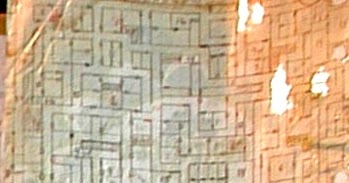Not a big fan of megadungeons but even more against "empty rooms". I just don't see the point.
Every room should have something for the PCs to see/push/find/discover/break/chat etc. Even if it's a thrown away piece of kit, evidence of a former presence, a clue to something, etc.
In megadungeon play empty rooms serve several purposes.
A big part of the original playstyle was navigating the dungeon, with mapping, resource (torches) and time management, being skills tested. Trying to avoid getting lost, trying to find hidden treasures without running into too many monsters, figuring out spots where it made sense to devote time to searches and risk more wandering monsters, etc. The time burned moving through empty rooms is meant to build suspense. Every random encounter check is a chance of a dangerous wandering monster which usually has little or no treasure. So they're an ever-present threat you're hoping to dodge while you search the labyrinth for valuables and magic. Some of those "empty" rooms and corridors WILL wind up having random encounters in them.
I think it's often a good idea to put some little clue or useful bit of dressing or description in an empty room, but it doesn't have to be much. One of my favorite tweaks to random encounter rolls is to make the random encounter happen on a 1, but a SIGN or clue of a wandering monster also be found on a 2. This gives the PCs hints or info about what kind of monsters inhabit the area, especially if you're using random encounter charts at least partially drawn from the monster lairs on that level.
Dungeons with lots of empty space have greater verisimilitude from the perspective of having actual buffer zones between monster lairs so it doesn't look like they would necessarily have killed each other before the PCs got there or be allies like you would assume if they live next door. They also give players the option to run away from and then maneuver AROUND a monster lair that looks too tough.
Remember that if you're primarily seeking treasure (rather than fights), avoiding monsters or running away from them is a legit and smart tactic. Even if, for example, the party decides they want to come back and deal with the Bugbear lair they ran from last time, maybe they use empty rooms in the dungeon to help them do it! Perhaps tricking/luring one or a few of the Bugbears out to an empty area where the PCs can ambush them, rather than just storming the full lair all at once.
If you're playing one of the original rule sets or OSE (or another clone with Fleeing/Retreat/Pursuit rules), read those fleeing and pursuit rules! Note that most of the time monsters which ARE pursuing will break off pursuit once they lose line of sight to the fleeing party; this is one reason why the old dungeon maps have those weird jagged corridors. Although doors serve as well (and Hold Portal can be very valuable if you can put a door between you and the baddies).
Tournament modules, OTOH, often had more dense content in part due to time concerns in limited duration convention play slots, and published designs were often much more dense than the original guidelines for similar reasons- players largely seemed to prefer hitting more monsters quicker, less maneuvering around empty rooms. There's a dramatic demonstration of this contrast between Mike Carr's B1 In Search of the Unknown and Gygax's B2 Keep on the Borderlands. Mike Carr's module is much more about exploring this weird, mostly empty, mysterious space, where the Caves of Chaos has all these lairs right next to each other.
So, all that being said, having a large number of empty rooms is something the game moved away from, but they actually DO serve several purposes when playing the game in the original style.





